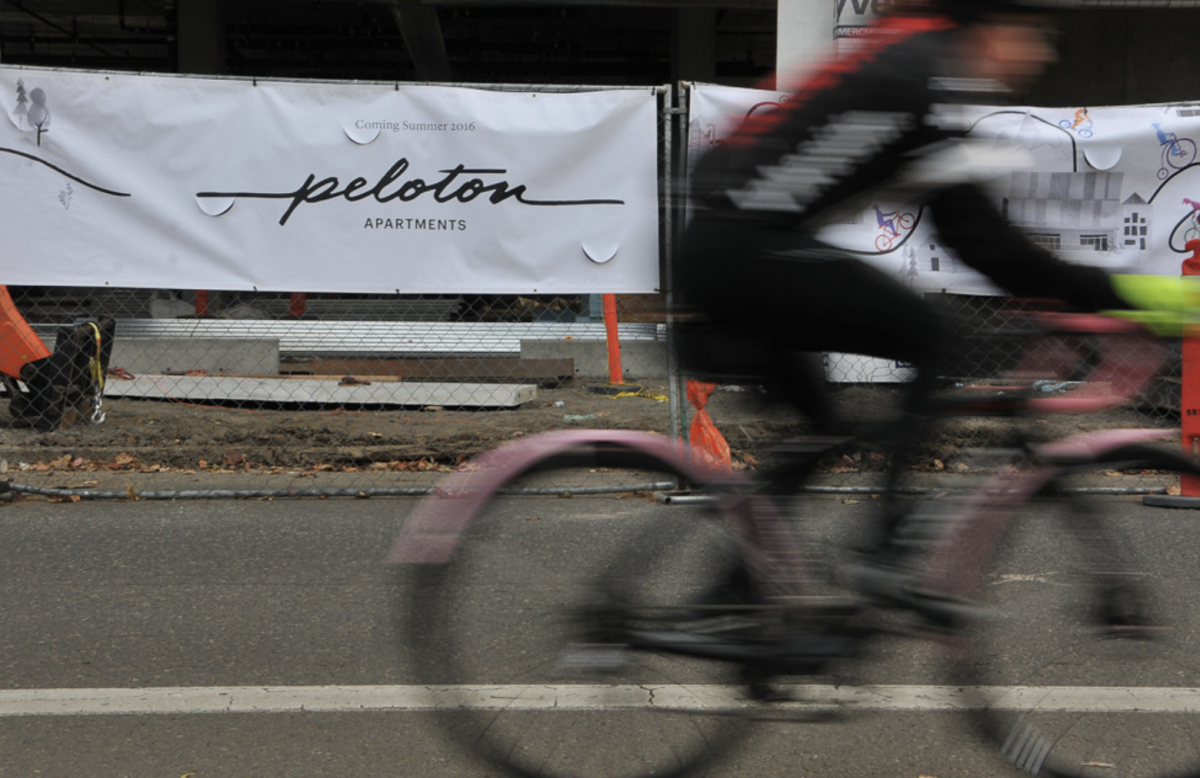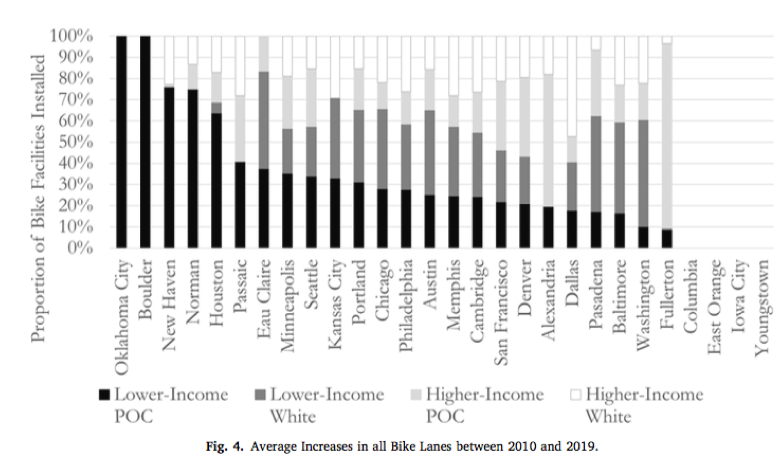
(Photo: Jonathan Maus/BikePortland)
The installation of new bike infrastructure in neighborhoods does not lead to displacement of people of color, and low-income areas received more “hard” facilities like buffered or protected bike lanes than high income areas, according to a new study published in July by Elsevier.
Researchers at the University of New Mexico and the University of Colorado looked at data from 29 U.S. cities over a period of ten years to come to a better understanding of the dynamic between socioeconomic and demographic characteristics and bike facilities. Looking at 11,010 miles of bicycling facilities in before and after bins of 2010->2014 and 2014->2019, they used sophisticated statistics to try to tease apart correlations and causality. Two questions they sought to answer were, “Does the installation of bicycling facilities lead to SED changes in a neighborhood or vice versa?” and “How well has the recent expansion of bicycling networks advanced transportation justice through appropriate distribution across the socioeconomic/demographic (SED) spectrum?“
Advertisement

Portland was one of the cities in their study group, and the authors gave PBOT and the GIS team a shout-out as the only city which included the year of facility installation as a data attribute. With the exception of Portland, “collecting facility data across time was a difficult and time-consuming manual process.”
This study was unique in that it distinguished between types of facilities, from sharrows to protected lanes. It found differences in who got what, with lower income areas more likely to receive protected bike lanes. By looking at the data longitudinally, they explored the “causality dilemma (i.e. chicken or egg) analysis.” Their interpretation of the results was that increases in the percentage of white people in a neighborhood preceeded an increase in bike facilities more so than the reverse, bike facilities preceeding a change in demographics. Put less formally, they could not find that adding bike facilities caused gentrification.
In 2011, a PBOT project to improve bike lanes on North Williams Avenue turned into a controversial debate as some neighborhood advocates saw the project as a harbinger of gentrification.
Like a lot of good research, their study leads to new questions. One area ripe for investigation is how well bike facility distribution meets demand:
the bicycling facility inequalities we found in the first part of this paper may be due to lack of community support in some neighborhoods. Trying to more evenly distribute such facilities by imposing them onto unwilling communities may be problematic. This point is why we use the term “inequality” throughout this paper as opposed to “inequity,” as it is still possible that the inequalities observed do indeed meet demand.
The paper is not available free, but libraries and schools might have subscriptions to Elsevier which allow you access. StreetsBlogUSA also has an article covering the research.
Nicholas N. Ferenchak, Wesley E. Marshall, “Bicycling facility inequalities and the causality dilemma with socioeconomic/sociodemographic change,” Transportation Research Part D, Elselvier, 2021.

— Lisa Caballero, lisacaballero853@gmail.com
— Get our headlines delivered to your inbox.
— Support this independent community media outlet with a one-time contribution or monthly subscription.


